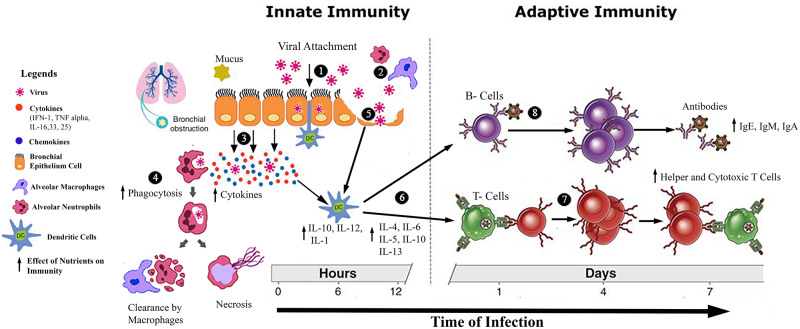Figure 1.
Effect of nutrients on the mechanisms of innate and adaptive immunity. (1) Virus attaches to bronchial epithelial cell layer. (2) Alveolar neutrophils and macrophages attack the virus. (3) Infected bronchial epithelial cells release cytokines (IFN-1, TNF-α, IL-16, IL-33, IL-25) to alert the neighboring cells and activate the innate immune cells, ie, neutrophils, natural killer cells, dendritic cells, and macrophages. (4) Alveolar neutrophils and macrophages engulf the virus for phagocytosis. (5) After multiple viral replications, epithelial cells burst and release new daughter viral copies, which results in activation of the dendritic cells. (6) Dendritic cells activate T-lymphocyte helper cells and B-lymphocyte cells. (7) T-helper 12 cells activate the cytotoxic T-lymphocyte cells. (8) B lymphocytes divide into memory and plasma cells, and plasma cells produce antibodies against the virus. Abbreviations: IFN, interferon; Ig, immunoglobulin; IL, interleukin; TNF, tumor necrosis factor.

